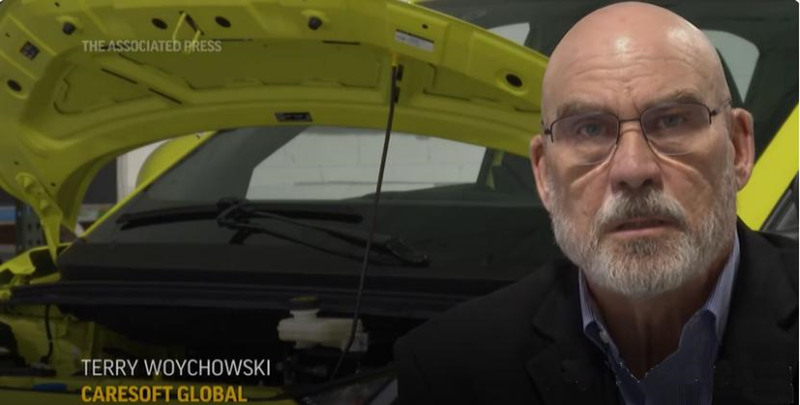- English
- Español
- Português
- русский
- Français
- 日本語
- Deutsch
- tiếng Việt
- Italiano
- Nederlands
- ภาษาไทย
- Polski
- 한국어
- Svenska
- magyar
- Malay
- বাংলা ভাষার
- Dansk
- Suomi
- हिन्दी
- Pilipino
- Türkçe
- Gaeilge
- العربية
- Indonesia
- Norsk
- تمل
- český
- ελληνικά
- український
- Javanese
- فارسی
- தமிழ்
- తెలుగు
- नेपाली
- Burmese
- български
- ລາວ
- Latine
- Қазақша
- Euskal
- Azərbaycan
- Slovenský jazyk
- Македонски
- Lietuvos
- Eesti Keel
- Română
- Slovenski
- मराठी
- Srpski језик
The Americans let the Chinese electric car break through the defenses
2024-06-28
Some time ago, the Office of the US Trade Representative (USTR) issued an announcement to increase tariffs on a variety of Chinese imports. The most exaggerated is to increase the tariffs on Chinese electric vehicles from 25% to 100%, which will take effect from August 1 this year.
|
Product category |
Current tariff rate |
New tariff rate |
Year Of Implementation |
|
Electric Vehicles (EV) |
25% |
100% |
2024 |
|
Semiconductor |
25% |
50% |
2025 |
|
Solar cell |
25% |
50% |
2024 |
|
Non-lithium battery parts |
7.50% |
25% |
2024 |
|
Lithium battery (EV) |
7.50% |
25% |
2024 |
|
Lithium battery (non EV) |
7.50% |
25% |
2026 |
In addition, according to online news, under pressure from the United States, the Mexican federal government has decided to distance itself from Chinese automakers and refuse to offer cheap public land or tax breaks to Chinese automakers investing and setting up factories in Mexico. In particular, the Office of the United States Trade Representative has pressured to exclude Chinese automakers from the free trade area stipulated in the North American Free Trade Agreement (NAFTA) and prevent Chinese automakers from using Mexico as a backdoor to sell electric vehicles to the United States. At the same time, former US President Donald Trump threatened to impose 100% tariffs on Chinese companies producing cars in Mexico if he returns to the White House during his campaign and speech in Ohio.
Is the U.S. government doing this because it is afraid of Chinese trams? With this question in mind, Caresoft Global, a well-known American automotive data research company, disassembled and evaluated the BYD Seagull. Why choose the BYD Seagull? Terry Woychowski, president of Caresoft Global, said that people in the industry are talking about this car. It is a very cost-effective car. It is now a direct threat to European automakers. It is not currently sold in the United States but has become a potential competitor to American automakers. Caresoft Global bought the car in China and shipped it to the United States without a license, so it can only be tested in a parking lot.

They evaluated the highest version of the seagull with a flying version. What shocked them was that although the price of this car was no more than $12,000, it did not cut corners and was fully equipped. In terms of safety, it is not only equipped with six airbags and, an electronic stability control system, but also high-quality brake parts, and the driving safety is fully guaranteed. The details of the exterior and interior are also quite exquisite. Even the seating stitches are matched with the body appearance. The interior materials are only used in more advanced models in the United States. The doors can be closed tightly when closed, and there is no great sense of cheapness.
The whole feeling is not an amazing innovation, but it feels decent enough. They are no longer willing to describe China's electric vehicles as cheap, but as inexpensive and decent. Terry Woychowski praised BYD Seagull for its outstanding performance in design, cost control, and manufacturing, taking into account cost advantages and efficiency requirements, and the materials and craftsmanship are comparable to mainstream American car companies. American car companies need to pay three times the cost to produce BYD Seagulls. Although this statement is a bit exaggerated, it also shows the huge difference between Chinese and American car companies in cost control.

The host and Terry Woychowski also conducted a test drive in and around the parking lot. They found that the seagull was quiet and did not make the rattling sound of a cheap car. It handled curves and bumps well, accelerating smoothly but enough, and generally exceeded expectations. The host believes that as a daily commuter car, going to work, shopping for groceries, and picking up children, there is no better fit than this car. Finally, he came to the conclusion that the United States has fallen far behind China in designing low-cost electric vehicles. BYD Seagull is a wake-up call for American industry. The United States must quickly learn a lot of design and craftsmanship to keep pace with the times and move away from the way cars have been built for a century.
Let's compare the BYD seagull with the Bolt and Leaf. Bolt and Leaf are two compact electric vehicles that are common in the US market. It can be seen from this table that according to the price in China, even if the BYD seagull is subject to a 100% tariff, it still has a price advantage in the US market! Although the BYD seagull is slightly smaller and has a slightly lower power, it looks fragrant everywhere in the face of the huge price difference. It can be seen from the sales of Bolt and Leaf that the US $20,000 electric vehicle market has not been stimulated. The Bolt has been discontinued at the end of last year. If the BYD seagull enters the US market, it will be completely unmatched! In the electric vehicle market in the United States, no one sells more than 100,000 electric vehicles under $30,000 a year. Chinese car companies are an opportunity to reshape the market. And the sales of pure electric vehicles in the United States are growing rapidly every year, and the overall auto market is huge. It is a tempting big cake for Chinese car companies.
|
Particular Year |
Sales of battery electric vehicles (unit) |
Growth rate (%) year |
|
2019 |
327,000 |
33.47 |
|
2020 |
488,000 |
49.24 |
|
2021 |
656,000 |
34.43 |
|
2022 |
920,000 |
40.24 |
|
2023 |
1,189,051 |
29.24 |
So in the face of the menacing Chinese electric vehicles, American car companies have broken their defenses. American car companies have long shown their dissatisfaction with low-priced Chinese cars. Musk bluntly stated at the January earnings conference that if they do not propose trade barriers, Chinese car companies will almost destroy most other companies in the world. But at the exhibition held in Paris, France, Tesla CEO Musk publicly expressed his opposition to the US tariffs on Chinese electric vehicles to technology investors. He made it clear that any restrictions on trade freedom or market distortions are not advisable and expressed "surprise" at the announced US policy. Musk's "fear" of low-cost Chinese cars while opposing high tariffs on Chinese electric vehicles is mainly because restricting the entry of Chinese electric vehicles into the US market does far more harm than good for these US automakers who have invested and built factories in China and exported part of the industrial chain.
Adding to the defenses of American automakers, although no Chinese cars are yet sold in the United States, American consumers are becoming more and more accepting of American cars. According to a new survey by research firm Auto Pacific, there is a strong interest in Chinese electric vehicles among young American consumers. It is reported that a total of 35% of 800 respondents between the ages of 18 and 80 expressed interest in Chinese electric vehicles, especially young people under the age of 40, and a whopping 76% considered buying them. However, this interest has declined among the over-60s, with only 25% willing to consider buying a Chinese electric vehicle, but 16% of respondents said they would also buy a Chinese electric vehicle if it could be produced in the United States. In addition, research published by Alix Partners, another consultancy, shows that 58 percent of US consumers planning to buy an electric car have knowledge of Chinese brands such as BYD, Zero, and NIO, suggesting the potential of Chinese electric vehicle brands in the US market is gradually emerging.
Summary: Now that the US election is still underway, there is still uncertainty about the policy in this area. At present, in addition to erecting barriers for Chinese automakers, the US government is also precisely subsidizing the manufacture of electric cars in the United States. In this case, Chinese automakers can only find another way to enter the United States, either to build factories in the United States or to cooperate with American automakers. But in the case of unclear policies, cooperating with American automakers to let suitable American automakers serve as a bridge between China and the United States, and leveraging the advantages of China's supply chain is undoubtedly a less risky path.
------------------------------------------------------------------------------------------------------------------------------------------------------------------------------------------------------------------------------------------------



